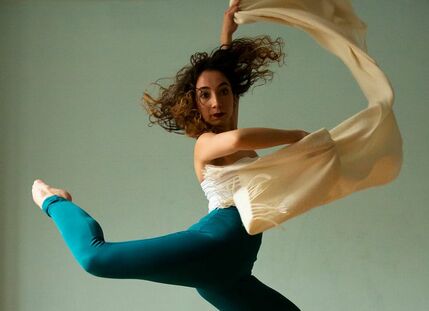I vividly remember my mother with a tobacco in hand blowing smoke to el muerto’s face and spitting alcohol onto the preinda (cauldron where el muerto sits) filled with gunpowder. A large fire would loom overhead; el muerto was listening and we can ask for guidance. We sang to Orishas as a form of prayer. In the car, we would sing a lot to Eleggua, the orisha in charge of showing you paths in life, el que abre los caminos. We would drive around in the car, pull the windows down and sing “Eshu o, Elegguara é, Eshu o Mofuribale, o Mofuribale mi padre, Elegguara é” while offering him candy, pennies, and corn in return for his help. In Cuba, it is not uncommon to participate in both Santeria and Palo religions or even also Catholicism. Living in Miami, though, where most of the Cuban immigrants were light-skinned and Catholic, I was not allowed to share with others that we practiced Afro-Cuban religions. We masked our practice with going to church on Sundays after Saturday’s Tambor. During my dance studies as a college student at Florida International University, I had the opportunity to train in Afro-Brazilian and Afro-Cuban modern dance (Tecnica Cubana). Things felt better, more normal -as if the two sides of my upbringing - classical dance at school and religious dancing at home- weren’t necessarily separate. After graduating college, I moved to the northeast United States, where I felt very out of place. Desperate to bring home to me, I began teaching and performing Cuban social dances (Son, Casino, Rueda de Casino) with my partner Michael Huang, took classes with Gilset Mora, danced for Philly’s Afro-Caribbean percussion group Timbalona (Andres Cisneros, Christian Noguera), and continued to train with other instructors such as Kati Hernandez (LA), Royland Lobato (Oakland), and Chini Perez Domenech (Minneapolis) while teaching and performing at Cuban dance congresses across the country. It wasn’t until Michael began taking percussion classes with Christian Noguera, playing at home, and at Rumbas at Imperfect Art Gallery in Germantown, where I began to feel comfortable in Philly. I finally felt at home. Rumba is a secular Afro-Cuban music and dance that has been passed down through the generations, a community celebration ("Rumba" also means "Party" in Spanish). The music is primarily percussive, carried by three tumbadoras, or conga drums, and led by a lead singer who improvises a call and response with the rest of the singers. When the music gets to its peak, dancers join in as well. There are 3 types of Rumba. Rumba Guaguanco is the most prevalent today, and the dance involves a hen and rooster like game of pursuit between the male and female dancers. Rumba Columbia traditionally is danced by only male dancers; it is an energetic and acrobatic style which involves dancers showing off their prowess and battling each other. Rumba Yambu is the slowest of the genres, and is considered the dance of the older folks. It is a sensual but restrained dance of courtship.
Today, I continue my training with master professor Marisol Blanco (Havana/Miami) where she directs the Afro-Cuban dance company Sikan, making Afro-Cuban dances and traditions better represented, even among the Cuban community. Thanks to her, I feel like coming home as an Afro-Cuban dancer and practitioner isn’t as isolating anymore. I continue learning and bringing information and more of home back to Philly. I’m happy to call UMA my second home now, where I can share my heritage and culture with students who are eager to learn and move to our infectious polyrhythms.
Comments are closed.
|
ContributorsKayla Bobalek Archives
May 2024
Categories |
Locations
812 Chestnut StSearch 'Urban Movement Arts @ 812 Chestnut' on Google Maps
|
2100 Chestnut St. 2nd Flr
*entrance is on 21st! between Rione Pizza & Monde Market*
|


 RSS Feed
RSS Feed